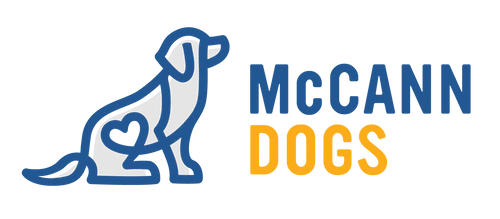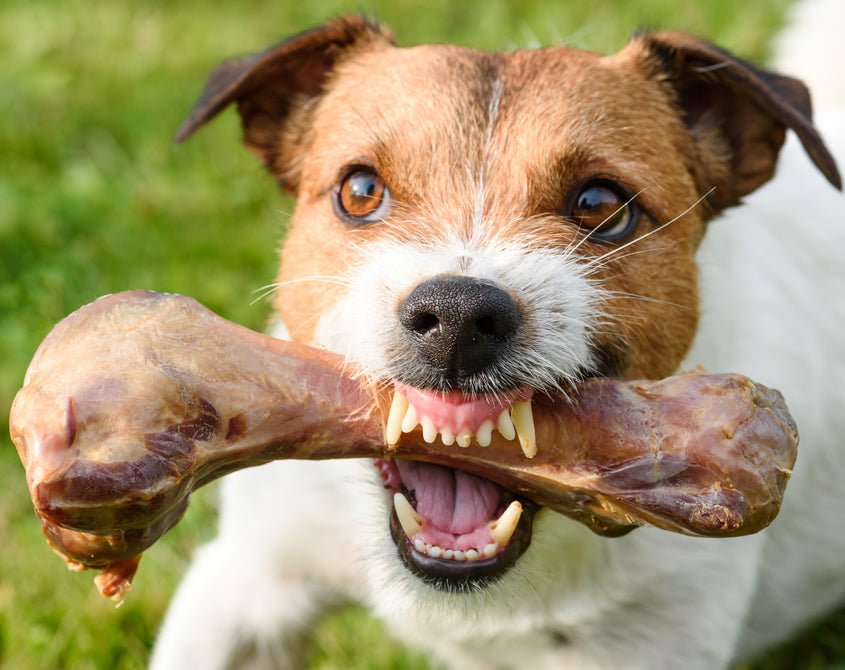![]() Listen to the Podcast
Listen to the Podcast
All dogs are capable of showing possession. It is ingrained in their DNA as canines and part of their base instinct behaviours as predatory creatures. So how do we work through this instinct to ensure our dogs don't think they need to turn teeth towards us if we wander into their space while they have an item of value?
A young dog's possession instincts are often nurtured in the 'whelping box' as they grow and learn from their littermates. Observe a litter of puppies and you'll see them learning all about life skills through play and interaction with each other. These behaviours are actually practise for their future survival. Since adequate food is part of survival for all creatures, possession of food items in the form of aggression will often start to show as a dog matures.
That makes it our job, and part of our responsibility in raising a 4-legged family member, to ensure that their is an adequate level of trust when it comes to the humans in the home. Not all dogs will show possession. Since our dogs are quite far removed from their ancestors through decades of domestication, you'll often get dogs who are not naturally inclined to show possession, however it's still something that you want to work on proactively.
First, A Word of Caution
If you have a dog who is showing signs of aggression when people approach while they are eating or chewing a bone, we suggest you run, don't walk, to a qualified dog behaviourist who can properly help you address these issues. These tips are proactive measures for those who are not seeing any signs of an issue. While you are waiting to work with a behaviourist, keep everyone safe with management. That means making sure when the dog has something of value that they may be inclined to try to protect, they should be in a safe place where there will be no accidents. While they are eating or chewing recreationally, put them in a crate or a room where they won't be bothered and won't rehearse the behaviours you're looking to address. That way, they can eat in peace and comfort and no one will be in danger in the interim. Forcing confrontation by taking the valued object will only make the aggressive reactions worse. Yes, in theory, we should be able to take anything away from our dogs, however if you think about this from the dog's perspective, it's a very different battle. The dog is worried you'll take their bone so they growl. If, in return, you move in and take their bone, their worst fear has come true. They've lost their item of value. The next time this situation happens, they may very well increase their aggression to a growl and snap, or even a bite to prevent the loss of their valued item.
So please, until you can work under the guidance of a qualified behaviourist, manage the situation for safety.
If you are working with a young puppy or a dog who doesn't show aggression over valued items, these tips will be safe for you. While you are working through them, you can use the management techniques above to help bridge the gap.
Humans at the Food Bowl = YUM!
Each dog is different in how they progress. Start with a plan of working through each step over a 1 week duration, but be ready to adjust and take longer if you see your dog is lacking confidence in any of the steps. These steps should be practised 3 - 5 times through the week, not at every meal.
If you start to see aggression while working any of these steps, stop and seek the advice of a qualified behaviourist.
Step 1: Empty Food Bowl
Start off with an empty food bowl. Our goal is to create an association of pleasantness when we are close to the food bowl.
Have some high value rewards and a portion of your dog's meal ready. High value rewards are something your dog loves - chunks of chicken or cheese are a good example of something that's more exciting than kibble. With the empty bowl on the ground, approach with your dog. As they investigate the bowl, drop in a small amount of kibble (or a spoonful of food if you are feeding a raw or cooked diet). When they finish eating, toss in a piece of the high value reward. Once they've gobbled that, you can throw in another small handful of kibble.
After your dog has finished eating each time, watch for them to look up to you. This is our goal: that they realize the yummy things that keep appearing are a direct result of you being close to their food bowl. Get into the habit of tossing in more each time they finish eating and look up to you. You can also practise retreating from and reapproaching the empty bowl.
Step 2: Picking It Up
While still working with the empty food bowl, a portion of their meals and some extra-special, high-value treats, continue to build step 1, but with a twist. Instead of dropping the food/treats into the bowl as it sits on the ground, make a big deal about picking it up to add your tasty morsels. Talk to your dog calmly, but with happy tones as you do.
Step 3: Approaching While They Eat
The next step you'll want to take is to drop a handful of kibble into the bowl, place it down and walk away a few steps. As they eat, approach them and drop in something great! If you have a dog who inhales food faster than the speed of light, you may want to get a 'slow-feeder' type of food bowl or place safe objects in the bowl (like tennis balls or Kongs) that force your dog to work around them to find their kibble. This will slow them down which will give you time to practise and also will aid in their digestion.
Watch their body language as you approach. If they freeze or show any other signs of aggression, stop and reassess with the help of a behaviourist. If their body language is loose, they are letting you know they are comfortable. If you see any tight body language, your dog is telling you they aren't comfortable. Seek advice before you proceed.
Bones and other Items of Value
You can work through these same steps with items of high value. Things like Antlers, Bully Sticks and Bones can be very valuable to a dog. Some dogs may show possession over bones, but not their food bowl. They'll all be different and sometimes, they'll surprise you by finding one item valuable over another.
With a puppy, I always start by holding items as they chew. This sends a great message that you are safe around items they may want and you are the bringer of wonderful things! This will help to build your value to the new puppy as well as helping them learn to cope with someone close to a high value chew.
Don't over-practise any of these steps. 3 - 5 repetitions in a week is enough. Some dogs will start to get anxious if you overdo this and you may end up creating a problem that wouldn't otherwise be there.
There's No Room for Aggression from Either Party
Dealing with possession can be easy or very difficult, depending on both the dog and human component. While we do not want to see aggression from our dogs over possessions, we also don't want to see it from the humans. Remember that if you're seeing aggression from the dog, it's crucial that you seek advice from someone who can help you work through it effectively and kindly. Forcing the issue by being confrontational will likely make matters worse and could very well end in disaster. Remember that if a dog is showing possession, it's because they are worried about losing their item of value. Don't make that fear come true. Work with someone who can help you teach your dog that you aren't a threat and that relinquishing items to you will result in better things, not worse.
As always, Happy Training!

